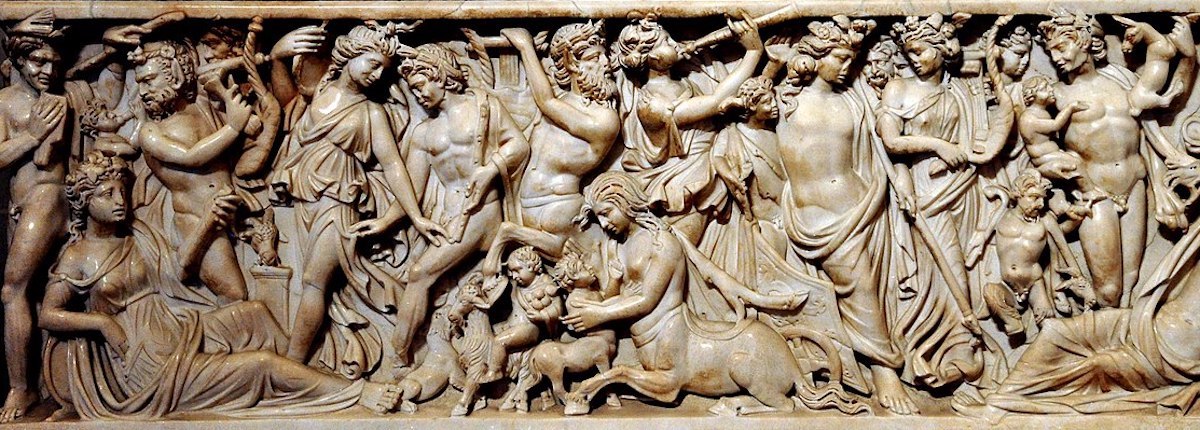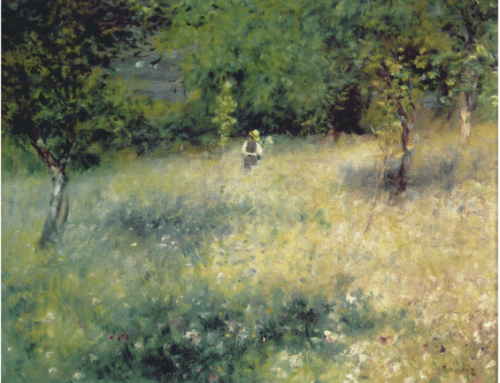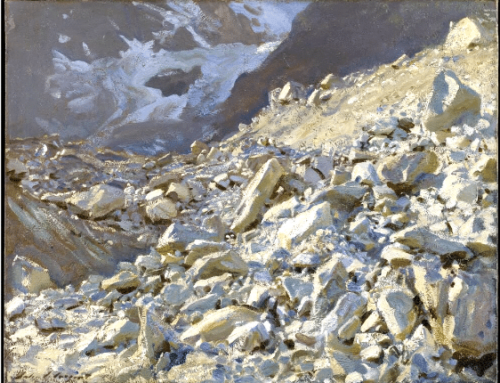In honor of Valentine’s Day, we’ve been looking at some art about love. In Part I we marveled at Canova’s “Cupid Awakening Psyche” in the Louvre.
Canova’s sculpture depicted a god (Eros, or Cupid in Latin, son of Venus, goddess of love) consoling (and ultimately marrying) a forsaken girl (the mortal Psyche). The ancient relief carving on a third-century Roman sarcophagus pictured above also celebrates mythical lovers in stone.
In the Roman carving we have another god, Dionysus, consoling another mortal, Ariadne, after she has been abandoned on an island by her hero-lover Theseus. The carving imagines the moment when the future lovers meet as an outdoor celebration scene, with dancers, musical instruments, mythological creatures and animals commemorating the occasion.
Before I even knew what this carving was about, it made me think of Keats’s 1820 poem, Ode on a Grecian Urn. I’ve loved that poem ever since I was a teenager (he had me at “still unravished bride of quietness”), mainly because I value and admire its message that through generations of human civilization art outlives our smallness and mortality to be “a friend to man.
All ye need to know
Keats didn’t know the story behind the vase he was writing about, and that’s partly what inspired him and why the poem works as well as it does.
As the poet wonders what’s going on and who the characters are in the vase’s “leaf-fringed legend … of deities or mortals, or of both,” he savors the artwork’s mystery, how even though the details are lost to time, the piece’s “legend” retains all its beauty, and therefore keeps us wondering, as the poet asks, “What men or gods are these? What maidens loath? What mad pursuit? What struggle to escape? What pipes and timbrels? What wild ecstasy?”
Even if we can never know the final “truth” about a work of art, even if truth itself remains elusive, these wonder-inspiring creative works console us with their timeless beauty and presence. They remind us, however briefly, that although much of what we may wish to understand is unknowable, that’s ultimately going to be okay. In essence, beauty – and by extension – LOVE SAVES THE DAY!
For, lest we forget, as French sculptor Antoine Bourdelle said, “the secret of art is love.”
O Attic shape! Fair attitude! with brede
Of marble men and maidens overwrought,
With forest branches and the trodden weed;
Thou, silent form, dost tease us out of thought
As doth eternity. Cold Pastoral!
When old age shall this generation waste,
Thou shalt remain, in midst of other woe
Than ours, a friend to man, to whom thou say’st,
“Beauty is truth, truth beauty”—that is all
Ye know on earth, and all ye need to know.
~ John Keats
from Ode on a Grecian Urn, 1820




